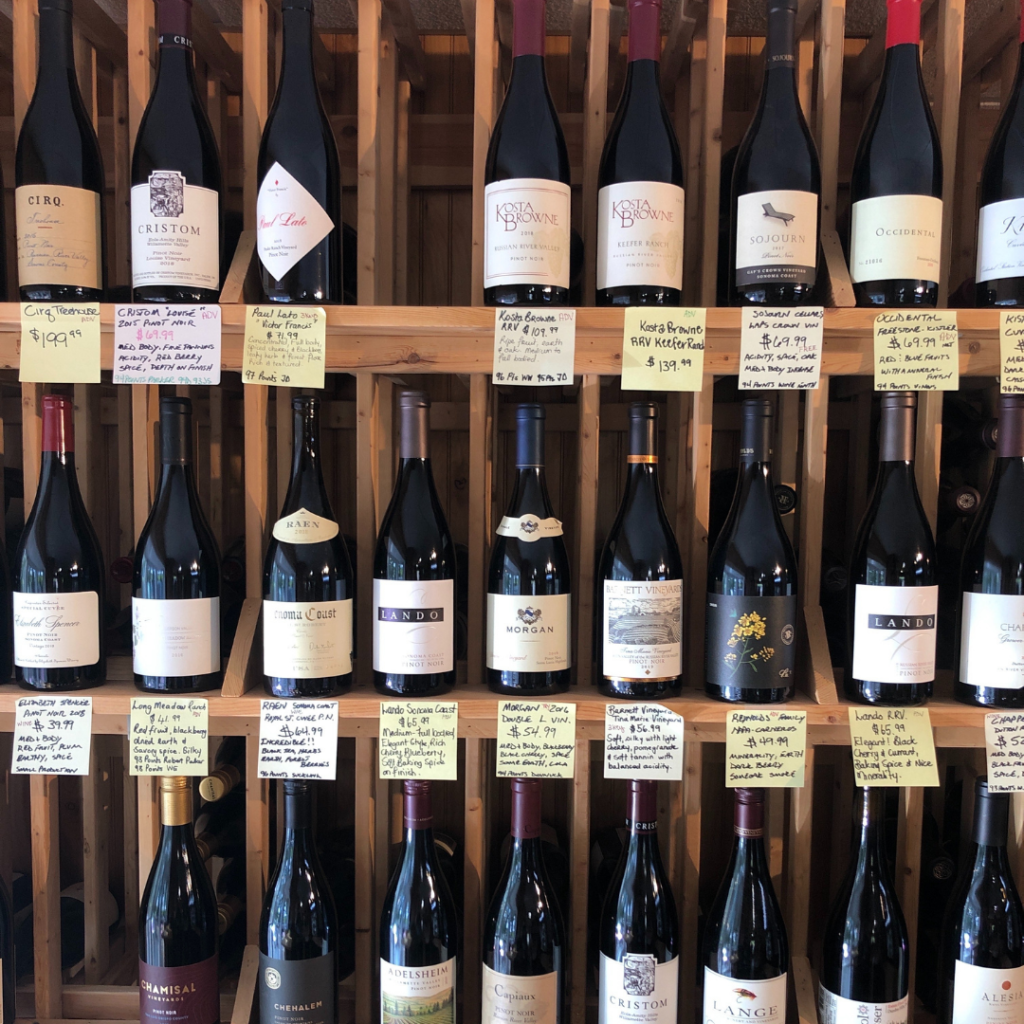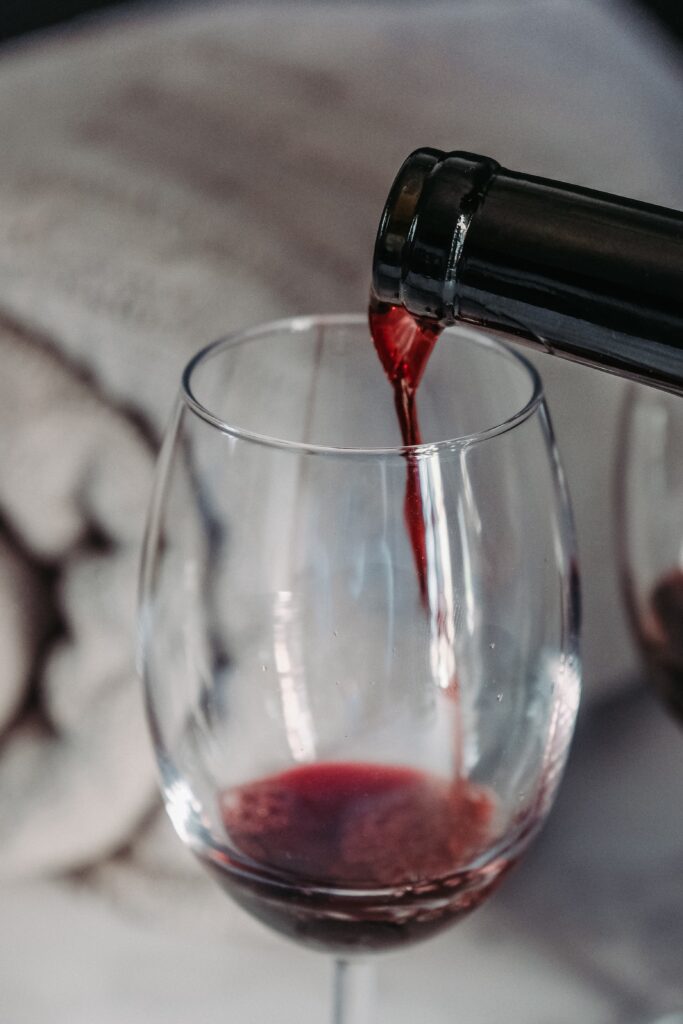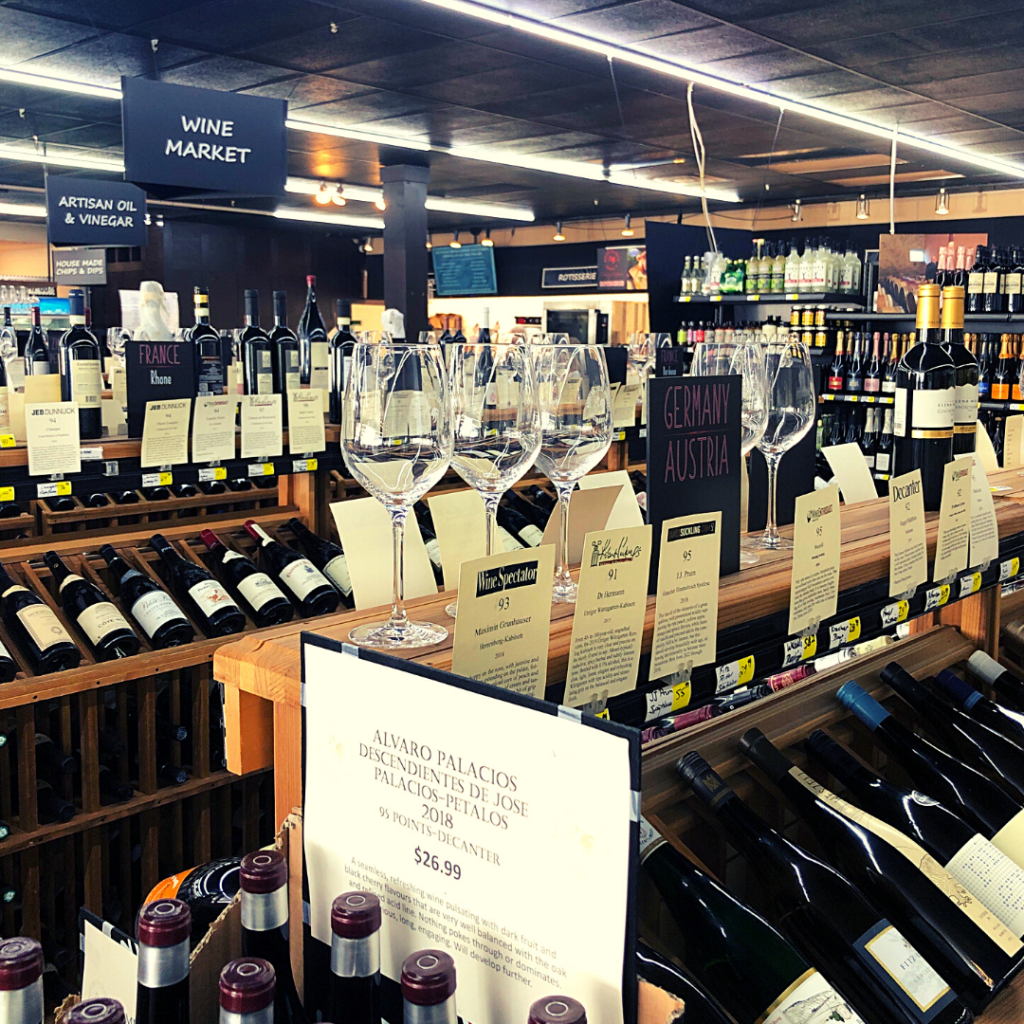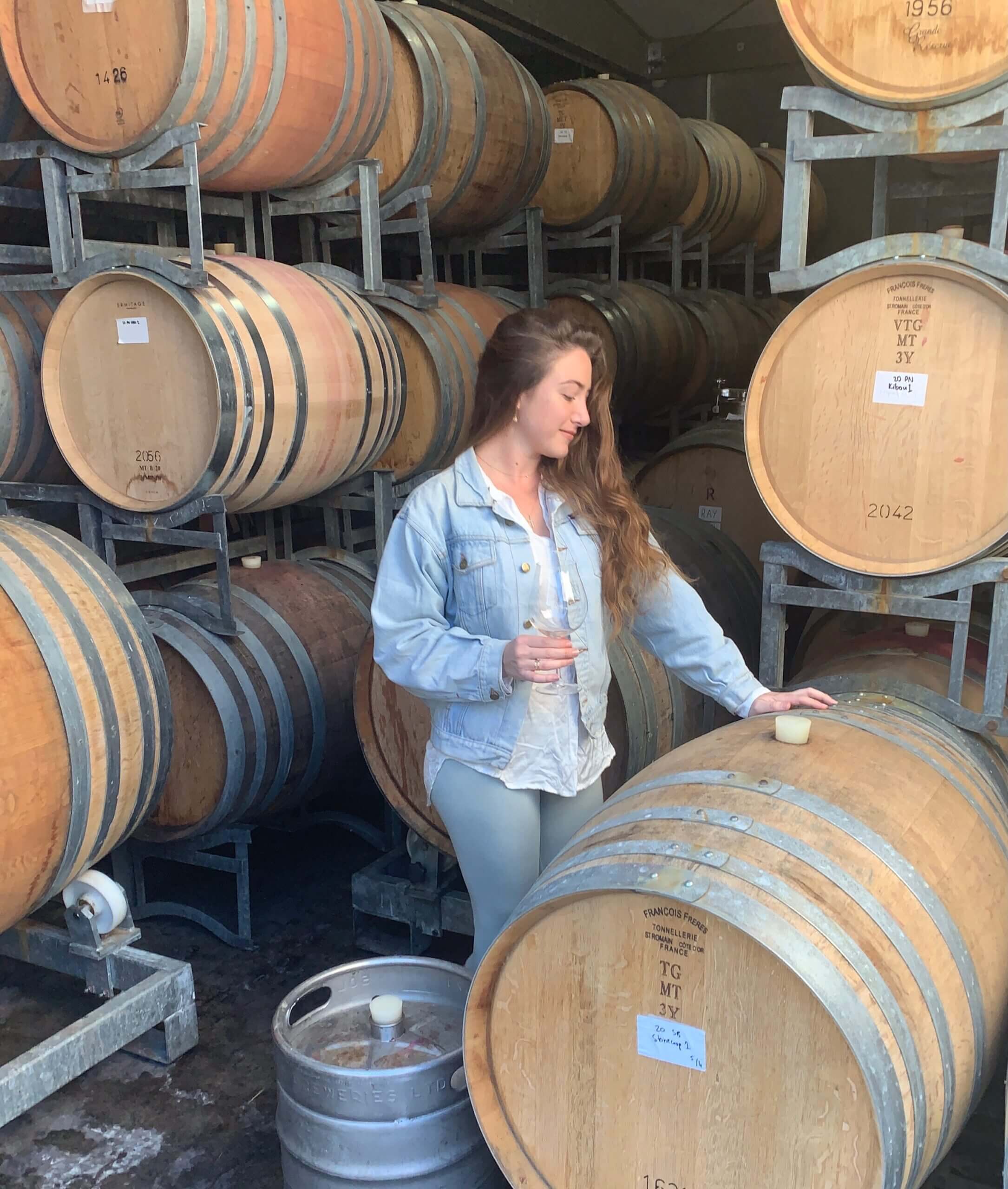A Beginner’s Guide to Different Types of Wine
Learning about wine is a lifelong education. The wine world is continuously expanding with each new vintage, winery, and bottle. While it’s impossible to learn everything about wine in just one article, this is our crash course on understanding and navigating the world of different types of wine.

6 Main Types of Wine
- Red Wines
- White Wines
- Rosé Wines
- Sparkling Wines
- Dessert and Fortified Wines
- Orange Wines
A Deeper Dive into Wine Types
Consider joining a wine of the month club to sample many different types of wine without having to seek out new bottles yourself.
Red Wine
Red Wines are known for their body, or tannic structure. This is really the biggest difference when it comes to red grape varieties. Tannins derive from the grape’s skin, seeds, stem, and even the wooden barrels.
When the wine is fermenting in the tank, it’s common practice for winemakers to punch down (similar to a big potato masher) the cap (made of the skins that float atop the wine) to make the wine richer with flavor, tannins, and pigment. A very cool process to watch!

Lighter Bodied Red Wines
- Pinot Noir
- Gamay
- Cinsault
- Lambrusco
- Zweigelt
- Pinotage
- Primitivo
- Zinfandel
Medium Bodied Red Wines
- Merlot
- Cabernet Franc
- Sangiovese
- Carignan
- Grenache
- Barbera
- Montepulciano
- Mencia
Heavy Bodied Red Wines
- Cabernet Sauvignon
- Syrah or Shiraz
- Tannat
- Petit Syrah
- Tempranillo
- Malbec
White Wine
White wines are often categorized by acidity levels. As tannins are the backbone of red wines, acidity is the backbone of white wines. While some grapes naturally have higher acidity than others, different factors such as weather and time of harvest have a substantial affect on acidity as well.
The warmer the vintage is, the more the grape’s acid levels will drop, while sugar levels rise. While it is possible to grow white grapes in warmer climates, they do tend to produce more lively wines when coming from a cooler climate.
Pro Tip: When talking about acidity in wine, common wine words to use include fresh, tart, and zingy. Lower Acidity White Wine Grapes
- Gewurtztraminer
- Muscat
- Roussanne
- Marsanne
- Semillon
- Viognier
Higher Acidity White Wine Grapes
- Chardonnay
- Riesling
- Sauvignon Blanc
- Pinot Gris or Pinot Grigio
- Gruner Veltliner
- Albarino
Rosé Wine

Rosé Wines steal the spotlight every summer with their gorgeous pink hues and easy-drinking style. There are two ways that rosé is produced, equaling slightly different results.
Famous rosé producing regions of Provence and Languedoc prefer the Direct Press Method, in fact so much that the president of Provence Wine Council, Francois Millo said, “People who make Saignée rosé are opportunists. In their mind they’re making red wine – the rosé just happens to be a by-product.”
Despite Mr. Millos strong opinion, of course there are some amazing Saignée rosés out there, it really just boils down to taste preference.
- Direct Press (Maceration) Method – Grapes are grown, harvested, and fermented with the intention of making rosé wine. Short maceration leads to a paler pink color and delicate flavors of strawberry and grapefruit.
- Saignée Method – A small amount of wine is bled off during early stages of red wine production. Rosés made this way yield a darker color with a fuller body, boasting dark berry and rhubarb flavors.
People who make Saignée rosé are opportunists. In their mind they’re making red wine – the rosé just happens to be a by-product.
Francois Millo
Sparkling Wine
Sparkling Wines come in all kinds of colors and styles. From sweet and effervescent Moscato D’Asti to a bold and bubbly Shiraz, there’s a sparkling wine for every occasion.
What’s the difference between sparkling wine and Champagne?
Champagne is actually the name of a region in France. This is the only place where Champagne can be produced. In fact, the Champagne name is so protected that the Champagne Committee filed a lawsuit against Yves Saint Laurent for naming one of their perfumes ‘Champagne’. As a result, the perfume later got renamed to ‘Yvresse’.

Did you Know: In France, blending red and white wine is only permitted when making Rosé ChampagneUnderstanding Residual Sugar Levels in Sparkling Wines
- Brut Nature – 0-3g/L
- Extra Brut – 0-6g/L
- Brut – 0-12g/L
- Extra Dry – 12-17g/L
- Dry – 17-32g/L
- Demi-Sec – 32-50g/L
- Doux – 50g/L or more
Dessert and Fortified Wine
Dessert and Fortified Wines are the perfect way to end a delicious meal. While they all have a good amount of sweetness in common, there are many different ways that this liquid dessert is produced.
One of the world’s most expensive dessert wines is a late harvest wine from Sauternes, France called Chateau D’Yquem. Once described by wine critic Robert Parker as “liquid crème brûlée”, you can bet it’s nothing short of absolutely stunning.
I was fortunate enough to try a few vintages of this incredibly rich, historic wine as well. If you ever find yourself in Sauternes, France, they do offer tours of the Chateau with a tasting, starting at 80 euros per person. So worth it!
- Late Harvest & Noble Rot Wines are wines made from grapes that were left on the vine longer than usual to ripen, causing natural sugar levels to rise. Often times, this results in Noble Rot grapes (grapes that are infected with Botrytis Cinerea fungus). Botrytis dehydrates the grapes, concentrating the sugar levels even more!
- Ice Wine (Eiswein) is wine that is made from frozen grapes. This is possible by picking the grapes when they are frozen solid on the vine. The frozen grapes are then pressed with the grape’s water staying frozen, causing nothing but the sweetest, concentrated grape juice to come out.
- Passito is a dessert wine made from raisins. The grapes are picked very late in the season, then further dried on straw mats. It’s like drinking liquid raisins…pure deliciousness.
- Fortified Wines always contain a distilled spirit (such as Brandy in Port wines). This increases the alcohol level, aka “fortifying it”. This was originally done to keep the wine from oxidizing on long ship journeys.
Orange Wine
Orange Wine is not like any other wine. It’s essentially mashed up, placed in a cement or ceramic tank, and left alone to ferment anywhere between 4 days to over a year!
The taste is exactly what you would expect…funky. Often called “the hipster” of wines, common flavors are Brazil nuts, bruised apples, walnut, sourdough, and honey.
Also called Amber wine, the country of Georgia still ages it in large clay vessels called qvevri (pronounced Kway-vree), which are buried underground. This is one of the most ancient ways to make wine, dating back thousands of years!
Old World Wine vs New World Wine

What is Old World Wine?
“Old World” refers to wines from European countries such as France, Spain, and Italy. Modern day winemaking techniques originated from the Old World, resulting in Old World influences among New World wines as well.
The winemaking methods used for Old World wines are traditional and straight forward, often resulting in fabulous wines that have lower alcohol, lighter body, and more acidity. These wines are not so focused on fruity flavors, but more so minerality.
Hundreds of years of blending different grape varietals to create perfectly balanced wines have definitely paid off. Without a doubt, it’s hard to avoid the impact that France alone has had on the entire wine world, with international grape varieties such as Pinot Noir, Chardonnay, and Cabernet Sauvignon originating there.
What is New World Wine?
When referring to “New World” wines, we are talking about countries that have implemented their very own flair to traditional European winemaking techniques. New Zealand, South Africa, Australia, and the North and South Americas are great examples of this. The wines speak for themselves, showing more fruit-driven flavors alongside higher alcohol, lower acidity, and fuller body.
New World wines really expressed their voice for quality during the famous 1976 Judgment of Paris. This was a blind tasting of France and California wines, with California’s Chardonnay from Chateau Montelena Winery winning first place, beating France’s best white Burgundies. A proud day for the New World fans!
Deciphering Old World Wine Labels
Wine labels, especially those that come from Europe can be tricky to read. Basically, there are two main types of wine labels commonly found in shops. Those that have a brand name, and those that are designated by their appellation credentials.
Appellation credentials are given to those wineries that have followed all of the strict rules of the appellation when making their wine. This includes alcohol percentage, grape variety, crop yields, and quality level.
- Producer or Name – Usually found at the top or bottom of wine labels.
- Region – The place where the grapes were sourced. Generally, the more specific the site is, the higher quality the wine will be.
- Variety or Appellation – This will be the name of the grape(s) that make up the wine. If the grape variety is not listed but the appellation is, this will give you a clue as to which grapes are used based on the appellation’s variety allowance. Wine amateurs can use a book like Wine Folly’s to help determine which grapes to expect by appellation.
- Vintage – The year which the grapes were picked.
- Alcohol by Volume (ABV) – How much alcohol the wine has in it. This is an important one…alcohol level has a big impact on the wine’s overall taste.
What to Look For When Tasting Wine
There are three important categories to pay close attention to when tasting wine. The color/look of the wine, the smell, and of course the taste.
The robe, or color of the wine itself can say a lot already. By comparing different red wines colors, you might eventually be able to guess what a wine is just by looking at it. If that’s not a cool skill to have, then I don’t know what is!

Although wine is meant for drinking, the nose is actually the most important part of tasting wine. 80% of our taste comes from what we smell. There are two ‘noses’, or smells when tasting wine.
The first nose is what you smell before you swirl your wine. These are known as the primary aromas. The second nose happens after you swirl your wine. More complex, secondary aromas can be picked up at this point.
Let’s not forget our favorite part…tasting the wine. When tasting wine, you always want to look for that mouthwatering acidity that usually comes a couple of seconds after you swallow (or spit) your wine. I can’t emphasize enough how important this is when it comes to balanced, quality wine. Acidity is also the key to determining how long your wine can age.
As Julia Childs once said, “Wine is a living liquid containing no preservatives. It’s life cycle comprises youth, maturity, old age, and death.” A wine with a nice, fresh acidity is simply alive!
Not only is wine alive, but it also helps our lives go down a little bit easier.
Cheers!

Katarina Jelks is a professionally trained sommelier from Hawaii. She received her Wine & Management Diploma from Le Cordon Bleu in Paris. Her experience working across the wine industry, in locations all around the world (France, Australia, New Zealand, the US & more), has resulted in a global perspective. She loves sharing her passion with others and helping them to chase their thirst for interesting wine and great food.
